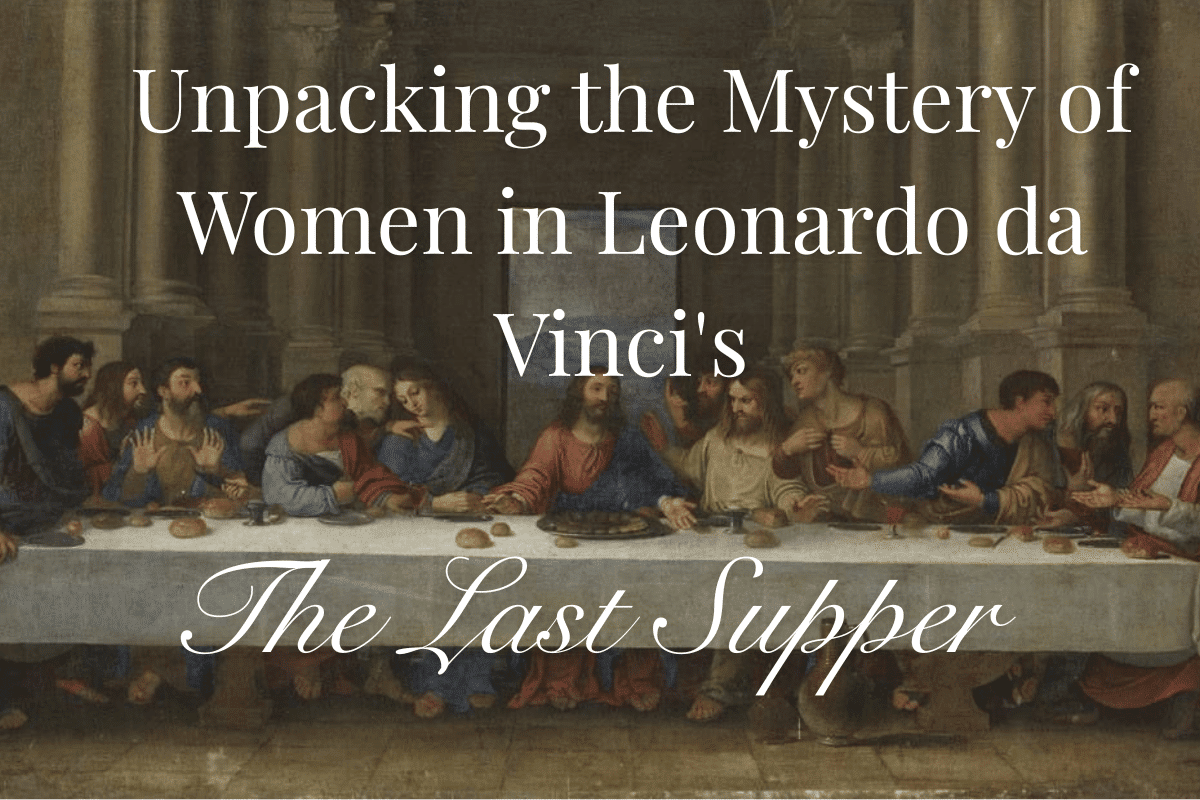Look closely at Leonardo da Vinci’s The Last Supper. Something crucial is missing, isn’t it?
For centuries, art historians and theologians have puzzled over one striking absence: why are there no women in this iconic depiction of Jesus’s final meal? Get ready to challenge everything you thought you knew about this masterpiece.
Table of Contents
- Bold Statement & Revelation
- The Enduring Mystery: Why No Women?
- Historical Canvas: Biblical & Societal Norms
- Artistic Choices & Theological Interpretations
- Controversial Theories & Modern Reinterpretations
- Beyond the Canvas: The Lasting Impact
- The Role of Women During the Renaissance
- A Call to Reflect and Engage
- Related Questions
Bold Statement & Revelation
Prepare for a bombshell: The Last Supper might not be what you think it is. Forget the simple biblical scene; this painting holds a secret about exclusion that’s been debated for over 500 years.
We’re diving deep into the historical and symbolic reasons why women were deliberately left out, and the shocking theories that have emerged.
Personal Challenge & Unveiling
You’ve seen The Last Supper countless times, but have you ever truly questioned its most glaring omission? It’s more than just an artistic choice; it’s a window into centuries of societal norms and theological interpretations.
Join us as we peel back the layers and decode the hidden messages behind the absence of women in one of history’s most famous paintings.
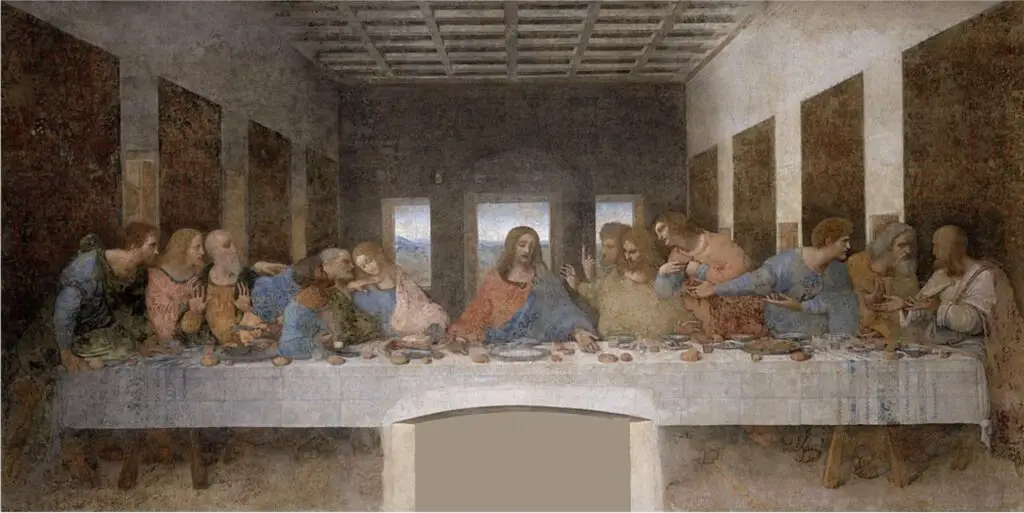
The Enduring Mystery: Why No Women?
As we open with a dramatic view of The Last Supper, zooming in on the empty spaces where women might have been, we are confronted with an immediate, thought-provoking question: Is it a historical oversight, a deliberate exclusion, or something else entirely?
Leonardo da Vinci’s The Last Supper is not just a depiction of a biblical event; it is a cultural artifact that reflects the values and norms of its time.
The painting, created between 1495 and 1498, has immense cultural significance, serving as a focal point for discussions about art, religion, and society. However, the glaring absence of women in this iconic scene invites critical examination and deeper inquiry.
Historical Canvas: Biblical & Societal Norms
Biblical Accounts of the Last Supper
To understand the absence of women in The Last Supper, we must first explore the biblical accounts of the event. The Gospels of Matthew, Mark, and Luke provide the primary narratives surrounding Jesus’s final meal with his disciples.
These texts explicitly mention Jesus and his twelve apostles, with no reference to female figures being present.
The Gospel of John, while offering a more intimate portrayal of Jesus’s relationship with his disciples, similarly does not include women at the table. This biblical foundation has influenced the artistic interpretations of the Last Supper throughout history.
1st-Century Jewish Societal Norms
In the 1st century, Jewish societal norms dictated strict gender roles, particularly concerning religious gatherings.
Women were often relegated to domestic spheres and were generally excluded from public religious rituals. Meals were significant social and religious events, and men typically dominated these spaces.
The cultural context of the time meant that women were not expected to participate in such gatherings, further reinforcing their absence in artistic depictions of biblical events. This societal framework laid the groundwork for the all-male gathering portrayed in The Last Supper.
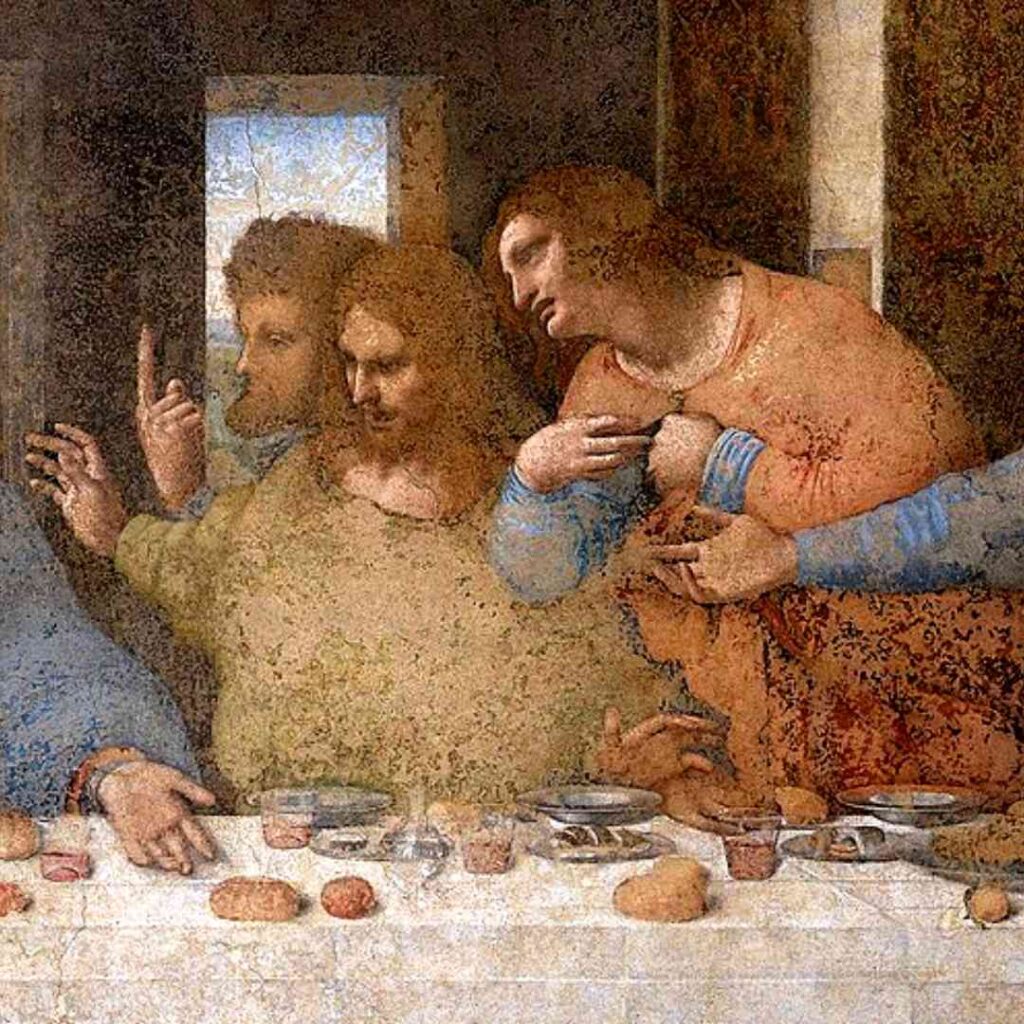
Artistic Conventions of the Renaissance
The Renaissance period, during which da Vinci created The Last Supper, was characterized by a revival of classical ideas and a focus on humanism. Artists of this era often adhered to established conventions when depicting religious scenes, which typically emphasized male figures in leadership roles.
Da Vinci’s choice to depict Jesus and his twelve male apostles aligns with these artistic norms. The portrayal of an all-male gathering was not only consistent with biblical texts but also with the prevailing artistic conventions of the time.
Artistic Choices & Theological Interpretations
Da Vinci’s Artistic Decisions
Leonardo da Vinci was not just a skilled painter; he was a keen observer of human nature and emotion. His artistic decisions in The Last Supper were deliberate and symbolic.
The composition of the painting, with Jesus at the center and the apostles surrounding him, creates a dramatic focal point that emphasizes the significance of the moment.
However, this composition also reflects the exclusion of women. By choosing to focus solely on the male disciples, da Vinci reinforces the traditional narrative of male leadership within the Christian faith. This artistic choice raises questions about the representation of women in religious art and the broader implications of their absence.
Theological Interpretations
The theological interpretations of The Last Supper further complicate the discussion surrounding the absence of women.
Many scholars argue that the all-male gathering is linked to the unique role of the apostles in the establishment of the Christian Church. The concept of “apostolic succession” suggests that the male apostles were the primary witnesses to Jesus’s teachings and the foundation of the Church.
This theological perspective underscores the idea that women’s roles in early Christianity were often marginalized. By depicting an all-male gathering, da Vinci aligns with the traditional view of male authority in religious contexts, perpetuating the exclusion of women from positions of power and influence.
Controversial Theories & Modern Reinterpretations
The Mary Magdalene Hypothesis
One of the most controversial theories surrounding The Last Supper is the suggestion that Mary Magdalene was present at the table, possibly even depicted as one of the apostles.
Some interpretations of the painting argue that the figure to Jesus’s right, often identified as John, could actually represent Mary Magdalene.
This hypothesis is fueled by the belief that Mary Magdalene held a significant role in Jesus’s life, challenging traditional narratives that often marginalized her contributions. Proponents of this theory point to historical texts that suggest a closer relationship between Jesus and Mary Magdalene than is typically acknowledged in mainstream Christianity.
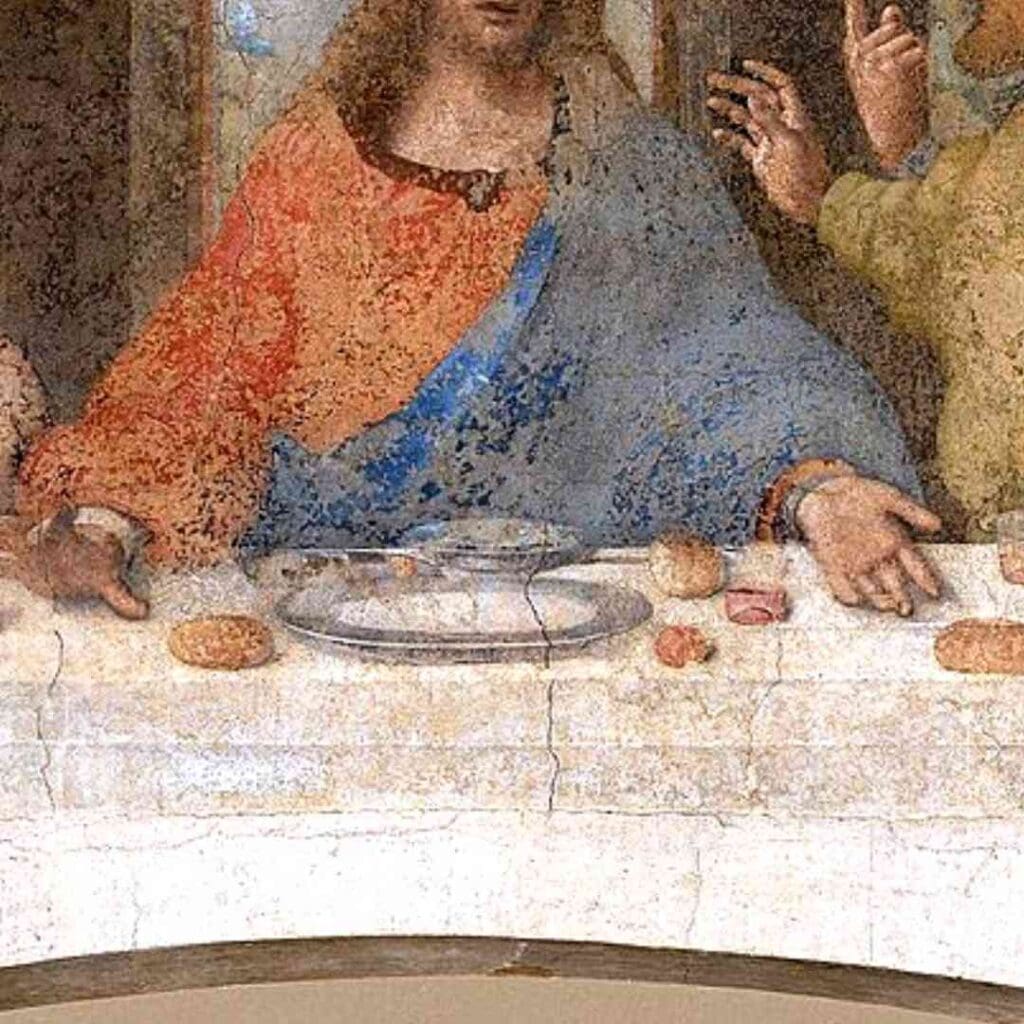
Feminist Art Historians and Theological Challenges
Modern feminist art historians and theologians have begun to challenge the traditional interpretations of The Last Supper. They argue that the absence of women in the painting reflects broader societal issues of gender inequality and the historical marginalization of women in religious contexts.
These scholars advocate for a re-examination of women’s roles in early Christianity and the impact of their exclusion from significant religious narratives. By bringing attention to these issues, they encourage a more inclusive understanding of art and history.
Ongoing Debate and Different Lenses
The absence of women in The Last Supper continues to spark debate among scholars, artists, and theologians. Different lenses through which to view the painting reveal the complexity of its meaning and the societal norms it reflects.
As discussions evolve, new interpretations emerge, challenging long-held beliefs and fostering a deeper understanding of the painting’s significance.
Beyond the Canvas: The Lasting Impact
Summarizing the Explanations
As we delve into the various explanations for the absence of women in The Last Supper, it becomes clear that there is no single, universally accepted answer. The interplay of historical, societal, and artistic factors contributes to our understanding of this iconic painting.
The absence of women is not merely an oversight; it is a reflection of the gender dynamics of the time and the prevailing norms that shaped religious narratives. By examining these layers, we gain insight into the complexities of art, history, and theology.
Engaging with Complex Layers
Encouraging viewers to engage with the complex layers of history, art, and theology presented in The Last Supper invites a more nuanced understanding of the painting. As we explore the implications of women’s absence, we can begin to appreciate the broader societal contexts that inform our interpretations of art.
Continuing the Conversation
As we conclude our exploration of The Last Supper, we invite readers to share their own interpretations and insights in the comments section. How do you perceive the absence of women in this iconic painting? What do you believe are the implications of this exclusion for our understanding of art and history?
By fostering dialogue around these questions, we can continue to challenge traditional narratives and uncover the hidden stories that shape our understanding of one of history’s most famous artworks.
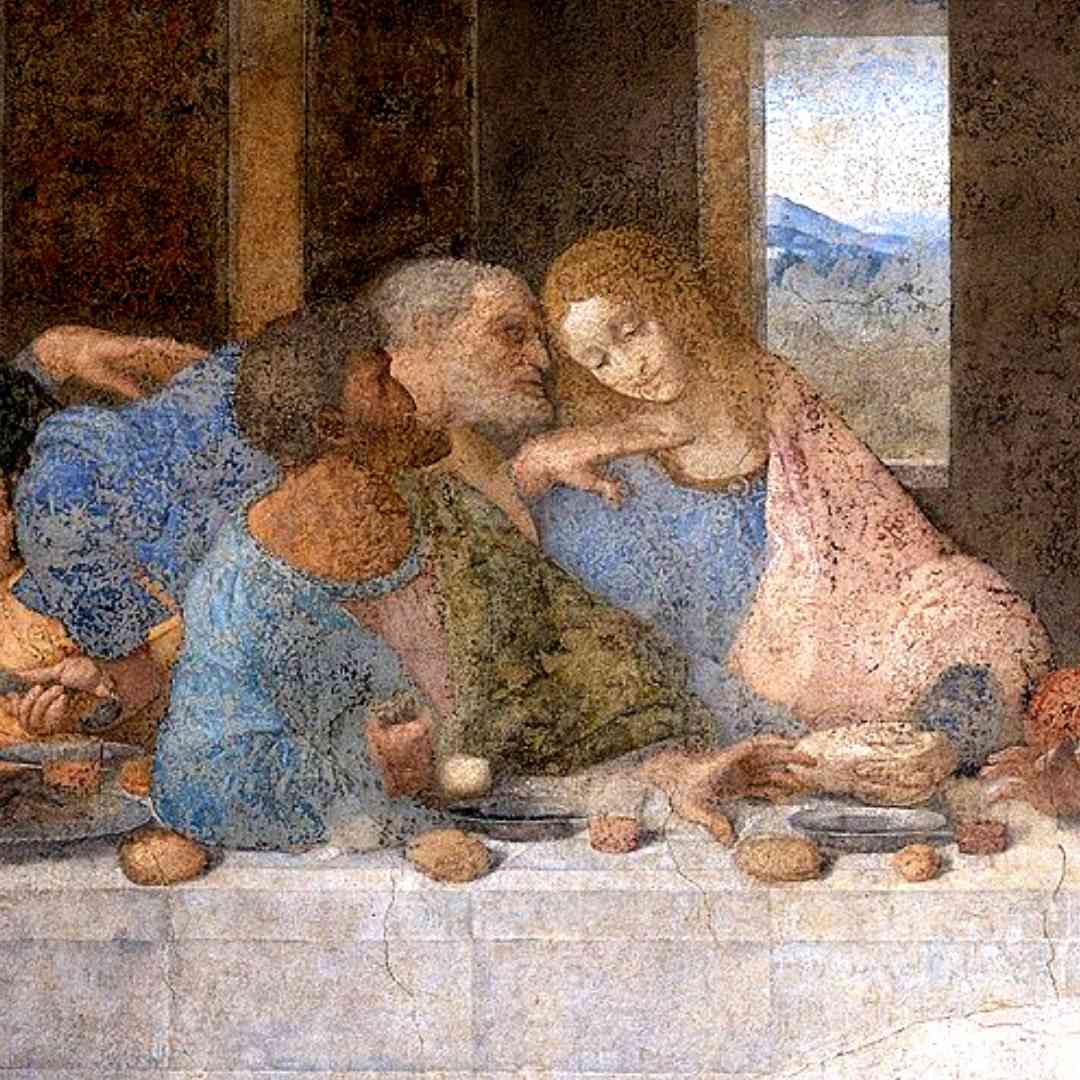
The Role of Women During the Renaissance
To fully appreciate the absence of women in The Last Supper, we must also consider the role of women during the Renaissance. This period was marked by significant social and cultural changes, yet women’s roles remained largely confined to the domestic sphere.
Domestic Roles and Limitations
In Renaissance society, women were primarily expected to fulfill domestic roles as wives and mothers. Their contributions to family and household were often undervalued, and opportunities for education and public engagement were limited. This societal structure reinforced the notion that women were not suited for participation in religious or public life.
Artistic Representation of Women
The representation of women in Renaissance art often reflected these societal norms. Women were frequently depicted in passive roles, serving as muses or symbols rather than active participants in religious narratives. This artistic convention further perpetuated the exclusion of women from significant historical and theological discussions.
The Impact of Exclusion
The absence of women in The Last Supper serves as a powerful reminder of the historical marginalization of women in religious contexts. By recognizing this exclusion, we can begin to challenge the narratives that have shaped our understanding of art and history.
A Call to Reflect and Engage
The absence of women in Leonardo da Vinci’s The Last Supper invites us to reflect on the broader implications of this iconic painting. It challenges us to question traditional narratives and engage with the complexities of history, art, and gender dynamics.
As we continue to explore the hidden stories behind The Last Supper, let us remain open to new interpretations and insights. By doing so, we honor the voices that have been silenced throughout history and enrich our understanding of the world around us.
Deep Dive Podcast
Listen to our Deep Dive Podcast about women and the Last Supper.
Anita Louise Art is dedicated to art education, great artists, and inspiring others to find and create their art. We love art that uplifts and inspires. #ArtToMakeYouSmile! #ArtToMakeYouHappy!
If you want to see any of my art, you can find out more by clicking here. If you are interested in what inspires me and my paintings, you can discover more by clicking here.
We have a free newsletter and would love you to be part of our community; you can subscribe to the newsletter by clicking here. If you have any questions, I would be happy to talk to you. You can reach me, Anita, by clicking here.
Subscribe to our Anita Louise Art YouTube Channel filled with great videos and information by clicking here.
Join us for our podcast “5 Minutes With Art.” Spend just 5 minutes a week with us to discover and learn about great art and artists. You can find out more about our podcast by clicking here.
Related Questions
What Did Leonardo da Vinci Contribute To Medicine?
Leonardo da Vinci contributed a lot to the medical field of study. His work contributed to our understanding of anatomy, medical physics, biomedical engineering, and neuroscience. He was fascinated with the human body as an artist and scientist.
By clicking here, you can learn more by reading What Did Leonardo da Vinci Contribute To Medicine?
What Inspired Leonardo da Vinci To Paint The Last Supper?
Duke Ludovico Sforza commissioned Leonardo to paint the Last Supper mural. What makes the Last Supper mural so unique is that he painted it at the exact time when Christ told the Apostles during The Last Supper meal that one of them would betray him. Leonardo showed the apostles’ reactions, including Judas, who betrayed Christ.
You can read more about What Inspired Leonardo da Vinci To Paint The Last Supper? by clicking here.
Where Was The Last Supper Painted?
What often surprises people—especially those familiar with the Florentine roots of many Renaissance masterpieces—is that this iconic painting isn’t found in Florence. Instead, it graces a wall in Milan, housed in the serene environment of a monastery. Read on as we delve deeper into the actual location of “The Last Supper,” how you can experience this awe-inspiring artwork today, and what makes this painting so timeless and iconic.
You can learn more by reading Where Was The Last Supper Painted? by clicking here.

